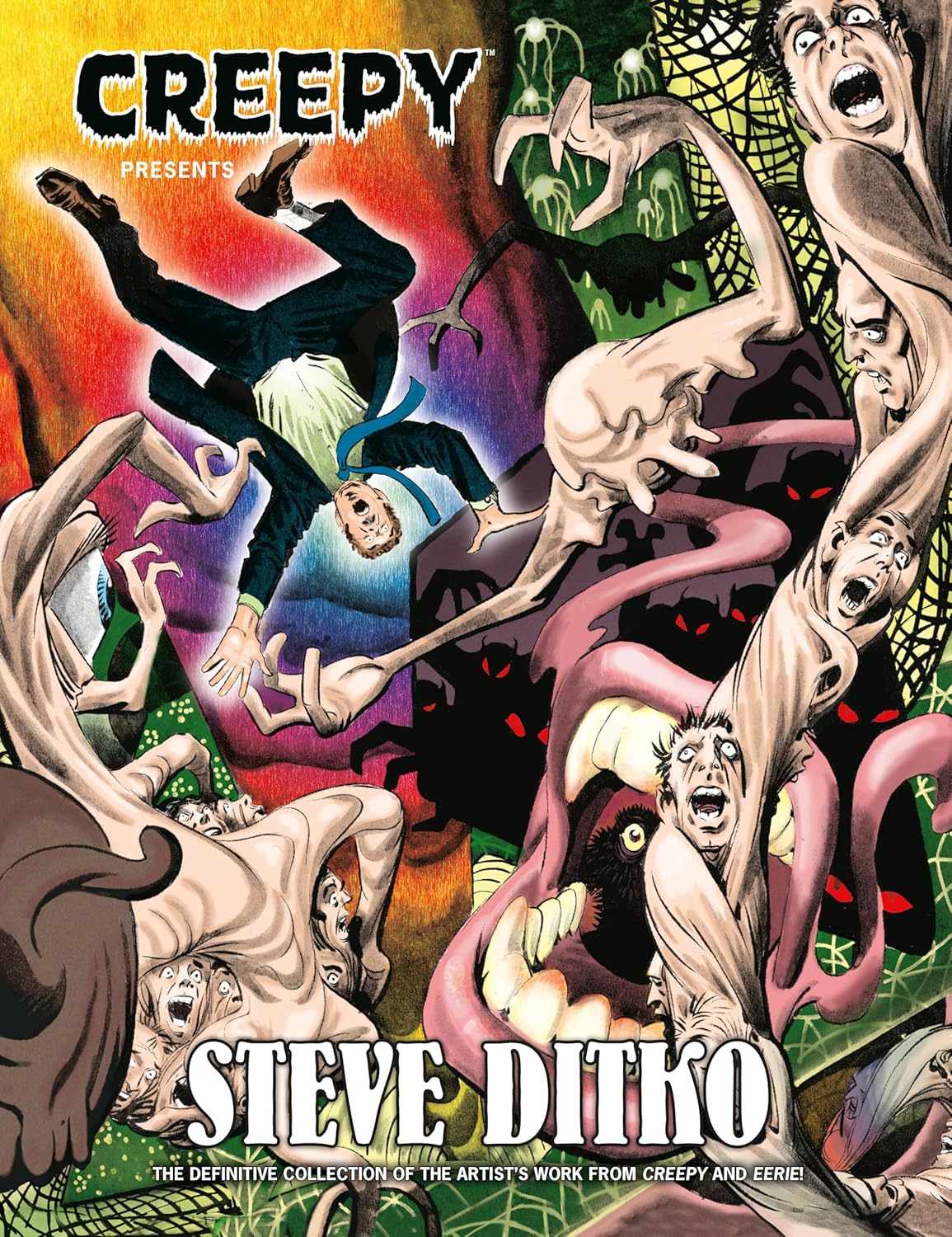Creepy Presents Steve Ditko
A Nice Pumpkin or Stocking Stuffer
 Zombos Says: Hey, it’s Steve Ditko, what more do you want?
Zombos Says: Hey, it’s Steve Ditko, what more do you want?
This book has been around for a while, but nothing says Happy Holidays more than fifteen tales of dread and more dread drawn by Steve Ditko and written by Archie Goodwin. Now, these stories appear in other tomes too, but Mark Evanier’s introduction provides interesting background for Ditko’s amazing artistic growth and personal philosophy.
I originally read these stories fresh off the news rack in Joe’s Luncheonette on the corner of West 12th Street and Avenue T in Brooklyn. Joe’s was a short walk from my house. I’d hit him up for my monthly fix of Marvel comics, Charlton, some DCs, and all the Warren and horror magazines I could tuck under my arm and hide from my mom as I ran up to my room to devour them. To read them again is to bring back memories, but also to realize how good his art and Goodwin’s stories were and still are.
Twist endings, dead endings, and sometimes a little salvation, but all were action-driven and made eye-grabbingly memorable with Ditko’s precise physical and metaphysical lines, shadings, and panels. He captured fevered dreams, night sweats, and bizarre alien landscapes like no other could in foreboding chiaroscuros. Paired with Archie Goodwin’s EC-styled, pulp horror narratives, the match is made in hell — perfect for horror fans — giving us vignettes of terror carefully measured in a few pages each. Today’s magazines that mimic the Warren magazine oeuvre just don’t cut it like Warren did, so these older tales are well worth reading. This book has stories from both Creepy and Eerie magazines.
Ditko first showed up in Eerie. He was three months away from ending his stint as storyteller and artist of The Amazing Spider-Man when he came to Warren (James Warren, Empire of Monsters by Bill Schelly). Marvel’s loss was Warren Publishing’s gain. Ditko was looking for freedom to do things his way and he got it. No comics code. No Stan Lee. Perfect.
In the two years (1966 to 1968) he spent with Warren, he explored his newfound freedom beginning with Eerie No. 3 and Room With a View. Black and white never had it so good. A man insists on renting the room no one wants to stay in. Cross-hatching lines create depth and a frenetic background as the man learns why. In Collector’s Edition (Creepy No. 10) this technique lends a tension throughout that runs across faces and the droopy, sweat-enveloped eyes (using a little Zip-A-Tone) shown in close-up at the bottom of the pages. Marker and ink wash create moody and sinister effects in The Spirit of the Thing (Eerie No. 8) and Deep Ruby (Eerie No. 6). In Spirit, hypnotism and astral projection lead to a showdown and in Ruby a gemstone leads to another world filled with terrors.
The sword and sorcery stories included here were something Ditko especially liked to explore, with their leanings to the mystical and occult. I agree with Mark Evanier in his sentiment that it would have been cool if Ditko could have had a hand in drawing Conan the Barbarian (especially the magazine version, Savage Sword of Conan, 1974) for Marvel.
Of the sixteen stories Ditko drew for Warren Publishing, here are 15 (one was not written by Archie Goodwin) to gift to your budding Ditko, comic book fan, or anyone who loves horror and hasn’t experienced Warren’s Creepy and Eerie.
